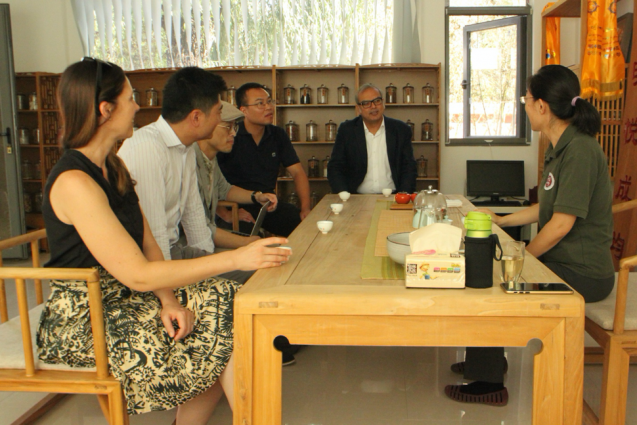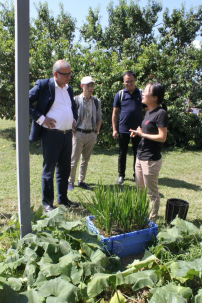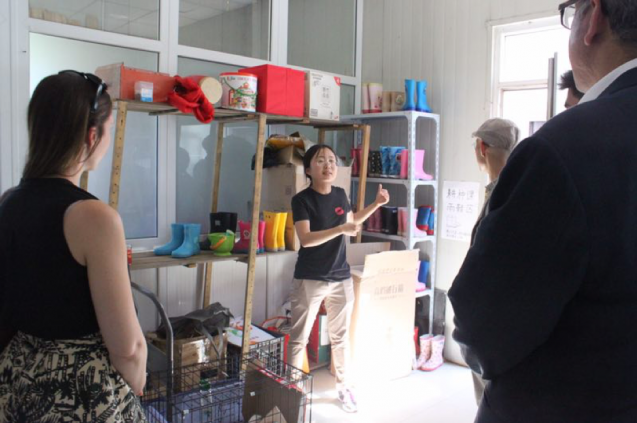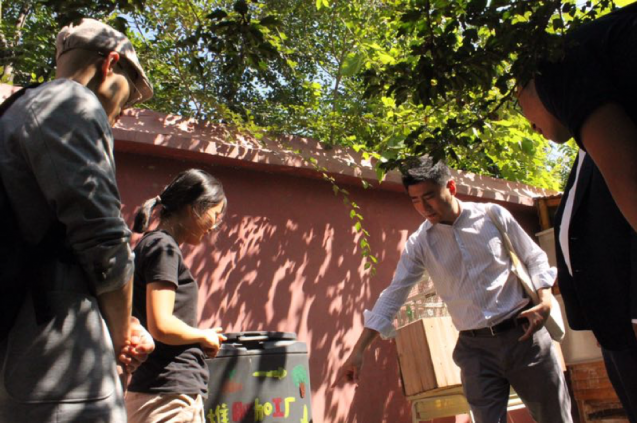Enhancing Sustainability Education in China’s Secondary Schools
Researchers who are developing environmental curriculum tailored to students in China share their findings so far.

In China, the government has taken a leading role on sustainability goals in recent years. However, the dissemination of sustainability concepts through formal and informal avenues lags behind these achievements and has not kept up with innovative educational advances in other countries. Currently, the pre-college curriculum is highly standardized with no specific focus on sustainability, sustainable development, or environmental responsibility.
The Earth Institute’s Research Program on Sustainability Policy and Management, along with colleagues from the Lamont-Doherty Earth Observatory, are working with the Tencent Foundation to develop a set of sustainability education modules for secondary school students in China.
The initial phase of the project, consisting of a literature review and series of expert interviews, focused on understanding the optimal learning experiences and training methods that can induce people to understand, adopt, and apply sustainability principles and change their behaviors, specifically in China. The research team is now developing educational content, and will provide relevant training and support to teachers on curriculum implementation, and evaluate the effectiveness of pilot programs. This blog post provides a brief overview of the initial research findings and an update on project progress.
Literature Review and Interview Summary
In China, environmental education — which typically takes into account the environmental, social, and economic aspects of sustainable development — is guided by two guidelines issued by the Ministry of Education. These guidelines suggest that schools implement class time dedicated to environmental education curriculum, in addition to integrating relevant knowledge into existing subjects. The overall objective of environmental education is to guide students to appreciate nature, teaching them to pay attention to environmental problems within their family, community, country, and the world; to understand the relationship between human, society, and nature; and to help students acquire the knowledge, skills, and competencies that facilitate a harmonious relationship between humans and the environment.

Despite strong advocacy by the Ministry of Education to encourage stand-alone environmental curriculum, sustainability education in China is still most commonly integrated into various relevant subjects, such as geography, chemistry, biology, physics, Chinese language, and moral education. However, the pedagogy of environmental education within these subjects is less than ideal. Teachers present relevant knowledge without challenging the students to think about causes and consequences.
The most well-known pioneer in developing an environmental curriculum in China is the High School Affiliated to Fudan University, a public boarding high school located in Shanghai. The school began exploring stand-alone environmental curricula and textbooks since the early 1990s. In addition to creating and adopting dedicated sustainability education curricula and textbooks, schools are exploring innovative ways to incorporate sustainability content into education; our research team was able to visit two such innovative schools in Beijing. One school conducts sustainability education by integrating the United Nations’ 17 Sustainable Development Goals into the existing school curriculum, specifically aligning each goal with appropriate subjects for each grade. The other school adopts a “whole school approach” that infuses sustainable practices in students’ daily lives on campus. For example, the school has a recycling room that helps students learn and practice how to correctly sort recyclable material including paper, various types of plastics, hazardous wastes, and usable goods for donation.

Informal sustainability education may also be delivered through experience-driven educational services that are guided by content, such as field trips, public campaigns and competitions. In China, many organizations and companies are partnering with schools to provide sustainability-related field trips to students. The experience-based approaches allow learners to directly encounter sustainability problems or work on solutions to mitigate these problems. However, sustainability education in informal learning environments is currently underdeveloped in China, compared with the rest of the world.
Overall, in terms of secondary school sustainability education, China is similar to many countries in that the primary approach is integrating sustainability content into relevant existing subjects. China has a formal guideline, issued by the central government, which promotes the adoption of standalone sustainability curricula and provides specific learning standards and suggested activities for different grade levels. However, the practice of environmental education in China is unbalanced across different regions; it is more prevalent in economically abundant regions such as Shanghai, whereas in the majority of the country, sustainability education is still offered piecemeal through separate subjects.
Furthermore, China is similar to many Asian countries and regions in having a highly examination-oriented education system, where sustainability content often gets lost when integrating into relevant subjects and is easily neglected by teachers if the content is not tied to standardized tests. Even if the content is measured in exams, the pedagogy typically focuses on test preparation, paying limited attention to building students’ awareness, attitudes and values, which play key roles in adopting sustainable lifestyles and consumption habits. Moreover, the heavy pressure of teaching standardized curriculum often leaves minimal capacity for the teachers to adopt innovative pedagogies and organize extracurricular activities.
Therefore, absent reforms in the educational system more broadly and changes in teacher practice, future sustainability curriculum design needs to incorporate more innovative delivery methods that can increase student engagement and improve their learning experience, such as through digital platforms, games, or using virtual reality technology.
Finally, through interviews with leaders who have successfully implemented sustainability education programs, the research team has identified several key features that are essential to the effectiveness of sustainability education. First, for sustainability education in both formal and informal settings, it is important to localize and contextualize the educational content and experience. The more localized and personally relevant the content and experience is, the more motivational and empowering learning can be. Even if the sustainability topics and the audience are global, the solutions should be discussed in ways that are relevant to learners’ geographical and cultural contexts.
Second, it is essential to provide channels for learners to apply the knowledge acquired, and act on a level that their impacts can be seen. In formal education environments, project-based learning can be an effective tool to lead students to conduct projects related to sustainability. In informal education environments, it takes a network of partners, including government or non-government organizations and community-based organization, to provide the opportunities for learners to take on sustainability actions.

Third, for school-based sustainability education, it is important to provide resources and support to teachers. For example, games can be an effective tool for sustainability education. In some contexts, the interactive learning format has an advantage in helping students retain knowledge. However, the effective use of sustainability games in the classroom may require instruction for teachers to fully take advantage of the teamwork and group learning environment.
Next Steps
Currently, the research project has moved on to the curriculum development stage. The whole sustainability education curriculum comprises 12 units or modules covering several interrelated topics:
- Introduction to Sustainability
- The Science of Climate Change
- Oceans and Sustainability
- Renewable Energy
- Trees, Forests, and Biodiversity
- Sustainable Finance/Green Economy
- Sustainability and Climate Policy
- Waste Management
- Food Systems and Agriculture
- Employment
- Inequality
- Sustainable City Planning
These modules will be tested in a pilot school located in Shenzhen, China, for students from grades 9 to 12. All 12 modules will be implemented by spring 2023.
Anyi Wang is an associate research scholar who works with the Earth Institute’s Research Program on Sustainability Policy and Management.
